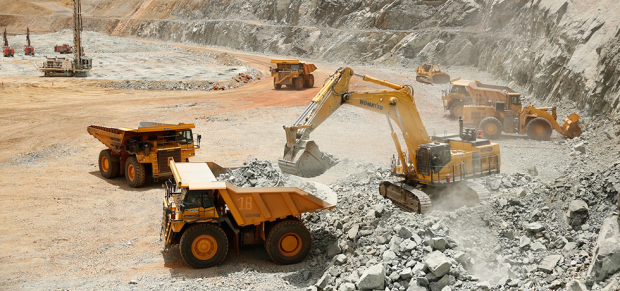companies do not actually have mortgage burning parties, but Teranga Gold’s (T.TGZ) President and CEO, Richard Young is delighted that the company retired all amounts owing under its loan facility with Macquarie Bank at the end of the year. Teranga, which started 2014 with $60 million owing on its loan facility, paid off the remaining $15 million on December 31, 2014 (see Press Release). This is quite an achievement and is especially laudible during a year when gold prices remained low compared to the record prices reached in 2011.
With its loan facility paid off, Teranga is focused on generating free cash flow. “It is not about production. It is about free cash flow. We have the flexibility to develop our pits based on gold price. That means we are better able to maximize free cash flows in both higher and lower gold price environments. As a result we can withstand fluctuations in gold prices and still be profitable and generate cash even in this lower gold price environment. In some scenarios, we may want to keep ounces in the ground and draw down from our inventory stockpiles. We have several levers we can use to maximize free cash flows.” said Young.
Much of Teranga’s ability to weather weak market conditions is due to its acquisition in 2014 of a neighbouring property in Senegal owned by Oromin Joint Venture Group (“OJVG”). This acquisition is the key to Teranga’s future and its current production flexibility.
“With the acquisition of OJVG, we more than doubled our reserve and resource base and added five additional open pit deposits all located within 8 kilometres of our state-of-the-art mill. Having multiple pits provides us with more options and the ability to withstand fluctuating gold prices,” explained Young. “We have the infrastructure in place, which means we have very low sustaining and new capital costs so we can adjust the sequencing of our production in tandem with lower and higher gold prices to maximize free cash flows.”
Teranga is committed to long-term responsible mining in the Republic of Senegal. “The political climate is very stable and Senegal is very supportive of mining,” said Young. “The President, who is a geologist by training and as a former minister of mines was instrumental in reforming Senegal’s Mining Code in 2003-2004, is on record saying that Senegal wants the mining industry to drive the economy.”
Young is enthusiastic about Teranga’s future. “We are focused on organic growth and looking at a number of growth projects with an internal rate of return of more than 20%.”
Teranga is looking to grow its production organically and is focused on strategic and methodical exploration. Teranga has a resource base of over 9 million ounces on its 246 km2 mine license but has only scratched the surface on the potential of the property. The company also has nine exploration permits encompassing approximately 1,055km² of land surrounding its mine license along a highly prolific gold belt.
Trading at 66 cents per share (as of close on January 20, 2015), Teranga has a market cap of $236 million. With the repayment of its loan facility and cash balance of approximately $36 million as at December 31, 2014, Teranga has greatly strengthened its balance sheet. With its production flexibility and by keeping an eye on the real costs of production and corporate expenses, Young has positioned Teranga to maximize free cash flow and profitability in spite of the weak gold environment, positioning the company for the day when gold prices and equities finally turn around.
FRENCH VERSION



